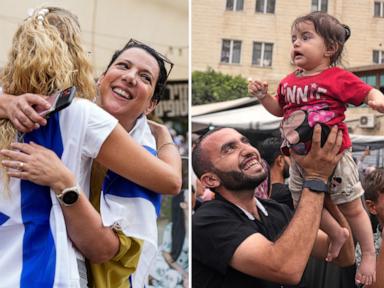
The Shocking Speed of This Agreement (Image Credits: S.abcnews.com)
In the shadowed corridors of Middle Eastern diplomacy, a tentative light flickers as negotiators seal a pact that promises relief after years of unrelenting conflict.
The Shocking Speed of This Agreement
Just days ago, the idea of a ceasefire seemed like a distant dream, but now it’s reality. Israel and Hamas have inked the first phase of a deal that could halt the violence that’s gripped Gaza for so long. This move comes faster than many expected, catching even seasoned observers off guard.
President Donald Trump has been vocal, predicting hostage releases as early as Monday or Tuesday. His involvement adds a layer of urgency, turning what was once a slog of talks into a sprint toward implementation. It’s a reminder that breakthroughs often happen when the stakes are highest.
Yet, the real surprise lies in the details—phased withdrawals, prisoner swaps, and reconstruction plans that could reshape the region if they hold.
Breaking Down the Core Elements
At its heart, this agreement focuses on immediate humanitarian steps. Hamas will release around 50 hostages, starting with living ones, in exchange for Israel freeing about 2,000 Palestinian prisoners. It’s not just numbers; these swaps carry deep emotional weight for families on both sides.
Israel commits to pulling back from 70% of Gaza over time, creating breathing room for aid and rebuilding. Reconstruction is slated to unfold over three to five years, with international oversight to ensure fairness. Think of it like rebuilding a shattered home, brick by careful brick.
One sticking point resolved: Hamas stepping down from governance, handing reins to a technocratic committee. This neutral body aims to sidestep power struggles and focus on stability.
Trump’s Role in the Spotlight
Donald Trump’s fingerprints are all over this deal. He announced the agreement personally, framing it as a win for peace that could extend beyond Gaza. His proposal includes a “Board of Peace” for oversight, with himself at the helm—a bold, if controversial, touch.
Critics question if this personal stake complicates things, but supporters see it as the push needed to break deadlocks. Talks in Sharm el-Sheikh wrapped up with Egyptian and Qatari mediators playing key roles, but Trump’s voice amplified the momentum.
His timeline is aggressive: full hostage release by early next week, followed by ceasefire activation. If it works, it could boost his legacy; if not, the fallout might be swift.
Phased Approach: A Step-by-Step Roadmap
The deal unfolds in stages to build trust gradually. Phase one kicks off with the ceasefire and initial exchanges, lasting about six weeks. It’s designed to test commitments without full vulnerability.
Here’s a quick overview of the phases:
- Phase 1: Ceasefire, hostage/prisoner swaps, partial Israeli withdrawal, and aid surge.
- Phase 2: Full withdrawal from Gaza, more releases, and start of reconstruction.
- Phase 3: Long-term armistice, disarmament talks, and governance reforms.
- International guarantees ensure no backsliding, with UN backing via Resolution 2735.
This structure mirrors past accords but with tighter timelines, aiming to prevent the endless cycles of hope and heartbreak.
Obstacles That Could Derail Progress
Not everyone’s celebrating yet. Hamas rejected some U.S. tweaks earlier, like full disarmament, calling them unacceptable. Israel, meanwhile, wants to keep a security perimeter, which could spark tensions.
External factors loom large—ongoing skirmishes in Gaza haven’t stopped, and broader regional players like Iran might influence outcomes. Plus, domestic politics in Israel mean the cabinet vote could face pushback from hardliners.
Rebuilding Gaza isn’t cheap or simple; estimates run into billions, and coordinating aid without corruption will test everyone’s resolve. It’s a tightrope walk, where one misstep could reignite the flames.
World Reactions and What’s at Stake
Global leaders are cautiously optimistic. The UN hailed the deal as a step toward lasting peace, while Egypt and Qatar deserve credit for hosting marathon sessions. Even in the U.S., bipartisan support underscores its importance.
But voices from Gaza highlight the human cost—thousands displaced, infrastructure in ruins. For Palestinians, this isn’t just politics; it’s about returning home and healing. Israelis, too, yearn for security without endless vigilance.
The stakes? A stable Middle East or another round of devastation. This agreement could ripple out, easing tensions with neighbors and opening doors to normalization.
Key Takeaways from the Deal
- Immediate focus on hostages and prisoners to build quick trust.
- Phased withdrawals prioritize humanitarian access over rushed overhauls.
- International involvement, including UN resolution, adds accountability.
As this ceasefire takes hold, the real test will be turning words into lasting change—ending the cycle of violence once and for all. What do you think this means for the future of the region? Share your thoughts in the comments below.







